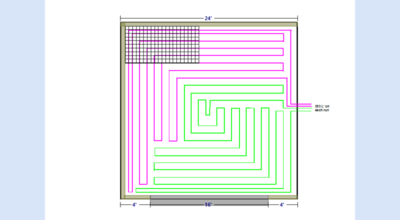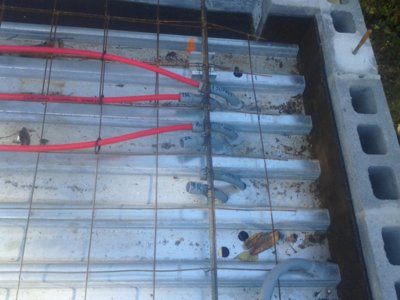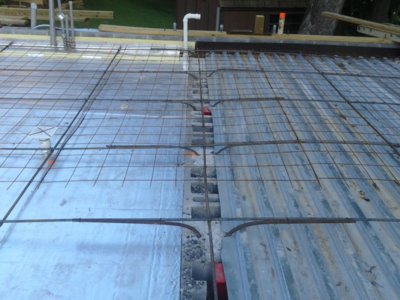747mopar
Well-Known Member
I'm pulling the trigger on the radiant floor for the addition so with many here being familiar with the installation why not gather some thoughts.
I did some research using their formulas and I'm coming up with 576' of 1/2" pex spaced on 12" centers so I'm thinking 3 192' runs. Looks like the better price on Pex is to just buy 1000ft (I can always use the extra elsewhere).
Looks like the best pricing on foam is buying it in 24 sheet amounts, the floor will take 18 but for an extra $40 I get 6 extra sheets. I may double it up around the outside perimeter then fill the voids between the post with foam instead of concrete too further insulating the slab from the outside.
Concrete will be about $1,200 @ 6" thick and another $264 in 1/2" rebar on 24" centers. Total will be in the $2,500 range for the complete floor providing I can get competent help and not have to pay professionals... I honestly don't want to pour it myself! I think if I rent some power tools I can manage the pour with little help.
So what recommendations do you guys have, pex in the center of slab? Anything I'm missing?
I did some research using their formulas and I'm coming up with 576' of 1/2" pex spaced on 12" centers so I'm thinking 3 192' runs. Looks like the better price on Pex is to just buy 1000ft (I can always use the extra elsewhere).
Looks like the best pricing on foam is buying it in 24 sheet amounts, the floor will take 18 but for an extra $40 I get 6 extra sheets. I may double it up around the outside perimeter then fill the voids between the post with foam instead of concrete too further insulating the slab from the outside.
Concrete will be about $1,200 @ 6" thick and another $264 in 1/2" rebar on 24" centers. Total will be in the $2,500 range for the complete floor providing I can get competent help and not have to pay professionals... I honestly don't want to pour it myself! I think if I rent some power tools I can manage the pour with little help.
So what recommendations do you guys have, pex in the center of slab? Anything I'm missing?



















